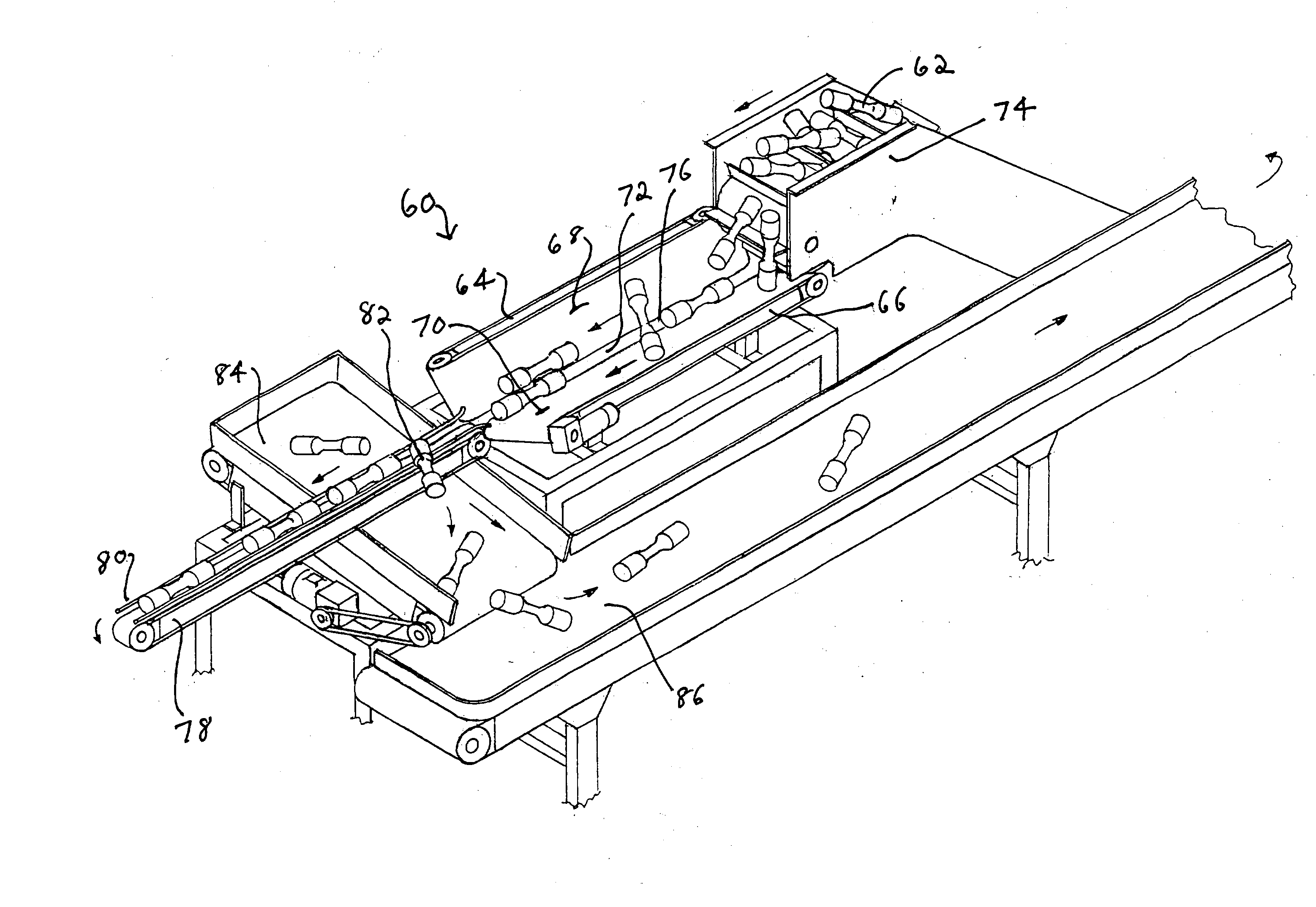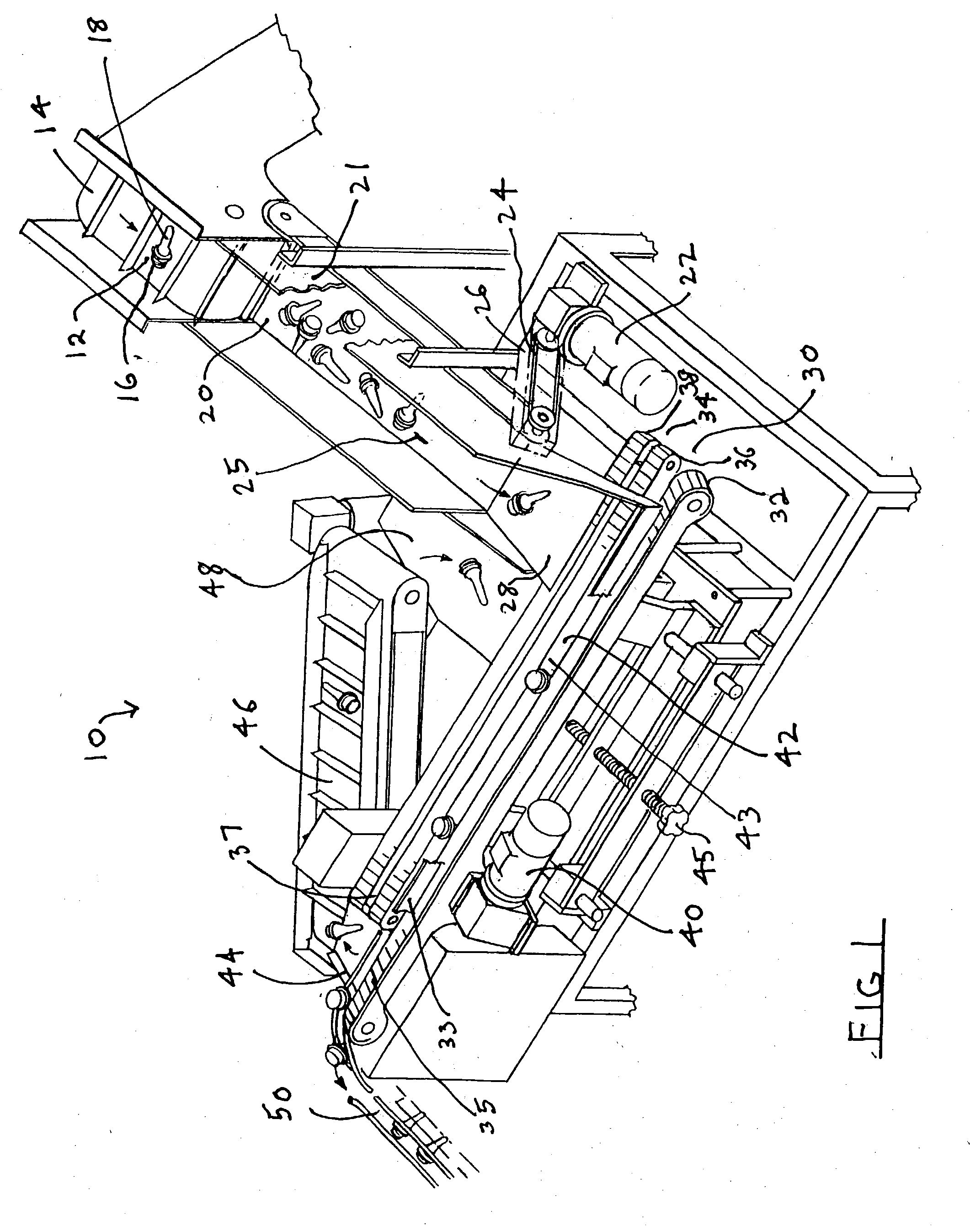Orienting and feeding apparatus and method for manufacturing line
a technology of feeding apparatus and manufacturing line, which is applied in the direction of conveyors, conveyor parts, transportation and packaging, etc., can solve the problems of inability to quickly orient and feed elongated objects of the foregoing types, and the device is unfortunately not capable of rapid and accurate processing of objects
- Summary
- Abstract
- Description
- Claims
- Application Information
AI Technical Summary
Benefits of technology
Problems solved by technology
Method used
Image
Examples
Embodiment Construction
[0013] The apparatus 10 shown in FIGS. 1 and 2 is particularly useful for orienting and feeding preforms of a type that has been previously discussed. These preforms are intended for orienting and feeding to a downstream processing point where they will be subjected to a blow molding process in order to produce a container of the type commonly used for various liquids such as large plastic beverage containers and the like. These preforms 12 are fed from an input bin (not shown) via a supply input belt 14. The representative preform 12 is a moldable plastic product which is well known. It is a unitary structure having an enlarged threaded portion 16 from which extends a tubular portion 18 which is of reduced diameter and which is heavier than the portion 16. As has previously been discussed the threaded portion 16 will ultimately form the neck of the blow-molded container, whereas the tubular portion 18 will form the hollow body of the container. The preform 12 is seen to be generall...
PUM
 Login to View More
Login to View More Abstract
Description
Claims
Application Information
 Login to View More
Login to View More - R&D
- Intellectual Property
- Life Sciences
- Materials
- Tech Scout
- Unparalleled Data Quality
- Higher Quality Content
- 60% Fewer Hallucinations
Browse by: Latest US Patents, China's latest patents, Technical Efficacy Thesaurus, Application Domain, Technology Topic, Popular Technical Reports.
© 2025 PatSnap. All rights reserved.Legal|Privacy policy|Modern Slavery Act Transparency Statement|Sitemap|About US| Contact US: help@patsnap.com



